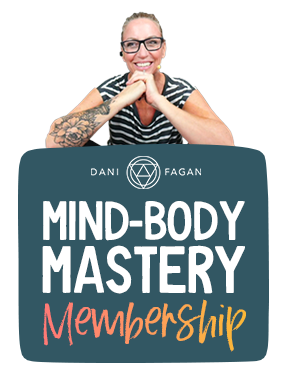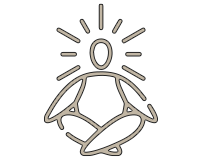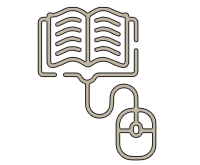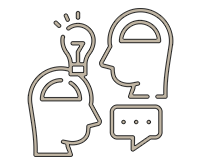3
Get your body moving again
Let go of the fear holding you back from doing what you love
One of the first things that Dr Sarno recommends, and really turned a corner for me, is to stop fearing triggering chronic symptoms with Graded Exposure, by resuming activities that you did before your chronic symptoms hit you. Depending on what you're feeling and what symptoms you're experiencing, this will be different for everyone.
Motion is lotion and movement is medicine
As chronic pain and fear of movement were my particular experiences, this section focuses more on those suffering from similar ailments, so it might not be directly relevant to you if your symptoms are in another part of your body, perhaps digestive, skin, or other types of chronic issues. However, the principle is the same - gently and carefully challenge yourself, face your fears at a pace that is manageable and do more of what you enjoy.
Movement might seem impossible at first if you’re in a lot of bodily pain, weakness or reduced mobility, but if you're like me, then fear is probably holding you back much more than pain is.
Start slowly, build gradually
The journey back to movement often begins with gentle exposure. Starting with small, manageable activities like short daily walks can help challenge the belief that complete rest is the only solution.
Personally, as I became comfortable with this, I progressed to gentle yoga and consciously increased my movement within my home, gradually overcoming the fear of re-injury.
Yoga played a vital role in my recovery, sparking a passion that led me to complete yoga teacher training in India. I'm now delighted to offer specialized yoga classes for the Mind-Body community. Click here for more details. Furthermore, I've developed a comprehensive, self-paced online course encompassing TMS-specific meditations, affirmations, journaling, restorative yoga, breathwork, and other valuable tools to guide you through your unique recovery process, drawing from my own experience. Learn more about the course here.
Yoga for trauma
Many within this community resonate with deeply rooted repressed emotions, trapped trauma, or PTSD/CPTSD. While psychological approaches are essential for addressing trauma, the body itself acutely remembers and bears its imprint. A traumatized nervous system operates in survival mode, bracing for impact.
Learning to listen to our bodies, cultivating inner safety and space, and engaging in a conscious, somatic movement focused on internal sensations can unlock, release, and facilitate recovery from stored trauma.
The style of yoga I teach transcends simply following poses and breath; it fosters a profound connection to our physical and inner landscape, allowing us to feel where emotions reside, connect with all facets of ourselves and our systems, build awareness, and sense the intrinsic vitality of our being. This practice cultivates our capacity for self-regulation, emotional processing, and growth.
In the book 'The Body Keeps the Score' by Bessel Van der Kolk there is a chapter dedicated to the power of yoga for trauma, he says:
It's about becoming safe to feel what you feel. These body-based techniques help you to feel what's happening in your body, and to breathe into it and not run away from it. So you learn to befriend your experience. Neuroscience research shows that the only way we can change the way we feel is by becoming aware of our inner experience and learning to befriend what is going on inside ourselves.
Teach the brain that movement is safe
Did you know that 80% of the information flowing through our nervous system, via the Vagus nerve is "afferent"? Which means travelling from the body to the brain, not the other way around? So gentle physical practices that cultivate a feeling of safety in the body can be far more effective than cognitive work alone. Breathing slower, moving intentionally and mindfulness all play an important role in teaching the brain that we are safe - which is absolutely KEY to switching off the sustained "threat" response and ultimately - chronic recovery.
By slowly and safely building a gentle practice where you are in control of the boundaries, how far and how long you go at every moment can be transformational in your healing. Sometimes just a few simple movements with the eyes closed is enough to really allow us to tune inwards and build our confidence in what were gradually exposing ourselves to.
Check out my Emotional Embodiment Masterclass series as part of my Mind-Body Mastery Membership for extra help with moving feelings and trauma out of the body.
Talk to yourself with confidence, not fear
One of the pivotal steps in shifting my ingrained beliefs was something as simple as consciously choosing to sit upright, despite a deep-seated conviction that a chair would cause me harm. Gradually, through this intentional action, I began to realise the truth: I was safe, and whole, and the chair posed no threat. This wasn't a pain-free process initially. To a certain extent, I had to gently confront the discomfort, consistently reminding myself of my safety. Each instance where the pain didn't escalate became a significant victory, encouraging me to progressively increase this "exposure" to normal posture. My internal mantra became a powerful affirmation: "I am not broken, there is nothing structurally wrong, and I am safe."
Alongside this physical re-engagement, I cultivated a new way of relating to my inner experience. Instead of the familiar frustration and anger directed at my body, I consciously chose to speak to my brain with kindness and understanding. As this gentle internal dialogue became more consistent, my confidence in the mind-body (TMS) diagnosis solidified, and a noticeable release of tension began to occur.
Recognising and firmly believing in your inherent wellness is fundamental to convincing yourself that you are structurally sound. This mindset shift, which we'll explore further, involves lovingly reassuring yourself that movement will support, not damage, your body. As I consistently practised these gentle exposures and cultivated this new internal faith, I experienced a gradual improvement. While not a complete overnight cure, this progress was significant enough to further validate the TMS diagnosis and instil the crucial hope needed to continue on the path to recovery.
Don’t overdo it
I’m not suggesting you sign up to a triathlon if that was your jam before, but maybe dust off your trainers and get out for a walk or a short bike ride. Float about in a pool and let your body move again in weightlessness if you can, it's so incredibly therapeutic to release yourself from the fear and feel movement again no matter how small.
Reach out to me if you'd like to take part in gentle yoga practices, they're suitable for any ability level and can ease you back into movement without the urgency of some other body-based practices. My yoga offerings are a crucial part of the nervous system healing piece of recovery, and are now part of my Mind-Body Mastery Membership platform.
Embrace the things you used to enjoy
The path forward involves gradually reintegrating into life. Reawaken your connection with the outside world and rediscover the joys that once brought you pleasure, such as gardening, cooking, dancing, music, and socialising. This process is about retraining your body and your primal brain to understand that you are indeed okay, completely safe, and these activities cannot cause harm.
During this time, fear and self-doubt can be significant obstacles. Be patient and kind to yourself as your body eases back into these activities. Listen to your need for rest, but consistently continue to gently re-engage with life.
Repeat repeat repeat
During this phase, consistency is paramount. Encourage yourself into consistent practice, think of it like a devotion to your body through gentle movement and continuously reassure yourself of your well-being. Over time, your brain will recognise the absence of a genuine threat, and the need for symptom flares will diminish.
While this principle alone can lead to full recovery for some, for me - and most of the folks I work with - the journey continues. Eventually, for me, the positive effect and soothing sensations derived from practising yoga significantly outweighed the fear associated with it, transforming yoga into a cherished passion.
Finding something you really love doing is important, so it's not a chore and you look forward to it every day...whatever that is for you, do it and do it often.
Online support to get you moving
There are a few great support groups on Facebook that focus on 'Exposure Therapy', such as Our Limitless Mind by TMS survivor and coach Matt Iac, based in Australia. Exposure Therapy is basically another name for the practice of getting back to what you used to do or facing what you fear the most. There’s so much support out there, get involved and reach out to others doing the same as you, it's comforting, encouraging and you no longer feel like you’re suffering alone - you’ll find motivation and understanding like never before. The TMS communities online are like online therapy 24 hours a day, it is amazing and literally, one of the only reasons I went on Facebook during my recovery.
I have support groups on Facebook too, you can join my private Mind-Body Mastery Facebook Group, we encourage and support each other through this journey, whether you take part in the classes or membership or not.
One resource that I found particularly motivating during the tail end of my recovery was The Mind and Fitness Podcast - a fabulous show hosted by TMS survivor competitive weightlifter and Crossfitter Eddy Lindenstein. His own story and motivating interviews further convinced me to not fear exercise and I gradually reincorporated the intense weight-bearing routines I once loved but no longer practised due to fear. He also runs a private Facebook group for all things TMS, check it out here - TMS - The Mindbody Syndrome.
Where to next?
Uncovering suppressed distressing feelings has a miraculous effect on our physical body - release the steam valve and give them somewhere to vent!
Click here to continue to the next section (Emotional exploration and self-inquiry)





